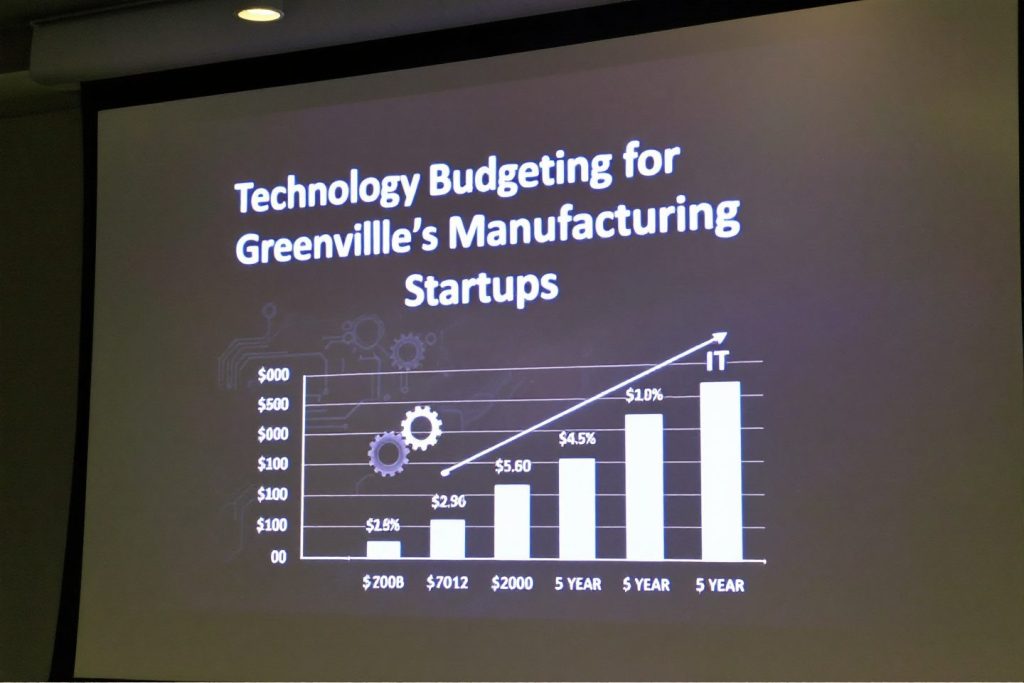Technology Budgeting for Greenville’s Manufacturing Startups: IT Planning for Growth Phases

In the fast-paced world of manufacturing, IT budgeting for Greenville manufacturing startups is a critical element for navigating growth phases successfully. As startups scale operations, their technology needs evolve, making proactive IT planning essential for sustainable growth. By aligning technology spending with business goals and future demands, startups can maximize operational efficiency and minimize costly surprises.
This guide explores the role of IT budgeting for Greenville manufacturing startups in supporting different stages of growth, ensuring they stay competitive and resilient.
Why IT Budgeting Is Crucial for Greenville Manufacturing Startups
IT budgeting for Greenville manufacturing startups is more than just a line item on a financial spreadsheet—it’s the foundation for scalable growth. Manufacturing startups face unique technology demands as they move from prototype to production, requiring a clear roadmap for IT investments.
Strategic IT planning helps:
-
Optimize resource allocation
-
Ensure compliance with industry standards
-
Improve operational efficiency
For broader IT strategies, explore our Managed IT Services designed to support manufacturing businesses.
Understanding the Growth Phases of a Manufacturing Startup
The growth phases of a manufacturing startup present distinct challenges and opportunities that necessitate meticulous financial planning and strategic investment.
Understanding these phases is crucial. It helps startups in Greenville effectively utilize funding and implement technology strategies. These factors can significantly impact their operational efficiency and overall success.
Identifying Key Technological Needs in Each Phase
Identifying key technological needs at each growth phase of a manufacturing startup is essential for ensuring that the appropriate IT infrastructure, process optimization, and technology investments are established. By understanding how these needs evolve, startups must continuously assess their technological needs. They should invest in scalable solutions. These solutions should promote collaboration, innovation, and productivity. can effectively align their technology budgeting and risk assessment strategies to maximize return on investment throughout each stage of growth.
As a manufacturing startup progresses from development to scaling operations, the technological landscape becomes increasingly complex. During the early stages, basic automated tools may adequately meet production requirements. However, as the startup expands, it will likely necessitate advanced systems for inventory management, data analytics, and customer relationship management to improve efficiency and enhance decision-making.
Consequently, startups must continuously assess their technological requirements and invest in scalable solutions that promote collaboration, innovation, and productivity. This strategic alignment not only facilitates smoother operations but also positions the business to capitalize on emerging opportunities and respond effectively to market demands.
Creating a Technology Budget for Each Growth Phase
Establishing a technology budget for each growth phase is crucial. It helps startups manage costs. Startups can project finances accurately.
By strategically allocating funds for technology investments, these startups can adeptly navigate the intricacies of budget forecasting while aligning their operational costs with overarching business goals and growth strategies.
Factors to Consider in Budgeting for IT
Manufacturing startups must consider several factors when budgeting for IT. These include financial analysis, compliance, and the need for technology audits to evaluate current investments. Identifying cost-effective solutions is crucial for aligning technology expenditures with overall business objectives and ensuring long-term sustainability.
Along with these considerations, startups should conduct thorough evaluations of potential technology providers and their offerings to ensure they meet specific operational needs while adhering to budget constraints. Implementing a robust financial analysis framework will enable these companies to anticipate future expenses and revenues related to their IT investments.
Staying informed about compliance requirements is essential, as noncompliance with industry regulations can result in costly penalties.
Regular technology audits can uncover inefficiencies. They highlight improvement opportunities, directing firms to solutions that minimize costs and enhance productivity, fostering a culture of innovation.
Implementing and Managing the Technology Budget
Implementing and managing the technology budget effectively is crucial. It ensures that IT expenditures align with business goals and strategies.
By employing careful project management and establishing performance metrics, startups can assess their technology investments and ensure adherence to IT governance standards.
Best Practices for Successful Technology Implementation
Successful technology implementation requires following best practices. These include cybersecurity measures, using automation tools, and training employees. By cultivating a culture of technology adoption, manufacturing startups can improve efficiency and drive growth.
Start by assessing existing systems. Identify areas for technological improvements. Manufacturing startups should prioritize the integration of robust cybersecurity protocols to protect sensitive data from potential threats. Leveraging automation tools not only streamlines production but also minimizes the risk of human error.
Additionally, ongoing workforce training helps employees gain skills to adapt and succeed. When executed effectively, these practices not only strengthen security and efficiency but also align with the strategic growth objectives essential for modern manufacturing enterprises.
Monitoring and Adjusting the Budget as the Company Grows
Monitoring and adjusting the budget is essential as a manufacturing startup grows. This ensures financial sustainability and effective cash flow management. By conducting regular reviews of the technology roadmap and making necessary adjustments, startups can better align their technology investments with evolving business needs and market conditions.
This proactive approach helps identify financial risks early. It also supports informed decisions on resource allocation. As the startup scales, it becomes imperative to align its operational capabilities with strategic objectives, which is where a comprehensive technology roadmap becomes crucial.
The technology roadmap serves as a guide. It highlights key investments in new technologies and processes. This helps the startup stay agile and competitive while maximizing returns on investment.
Adjusting the budget for growth helps the organization maintain its path to success in a changing manufacturing landscape.
Frequently Asked Questions
What is technology budgeting and how does it relate to IT planning for growth phases?
Technology budgeting is about allocating financial resources for technology expenses in an organization. It is closely tied to IT planning for growth phases, as it involves anticipating and planning for future technology needs and expenses during different stages of a company’s growth.
Why is it important for Greenville’s manufacturing startups to have a technology budget?
Today, technology is crucial for business success and competitiveness. Having a technology budget ensures that Greenville’s manufacturing startups can invest in the necessary hardware, software, and services to effectively operate and grow their business.
How can Greenville’s manufacturing startups determine their technology budget?
A manufacturing startup’s technology budget should align with its strategic goals and growth plans. This can be achieved by assessing current technology needs, forecasting future needs, and considering industry benchmarks for technology spending.
What are the potential risks of not having a technology budget for Greenville’s manufacturing startups?
Without a technology budget, startups may face unexpected expenses or miss investment opportunities. This can lead to operational inefficiencies, limited growth potential, and decreased competitiveness in the market.
How often should a technology budget be reviewed and updated?
Technology is constantly evolving, and so should a company’s technology budget. It is recommended to review and update the budget every year or as needed to align with current business needs and goals.
What are some tips for effectively managing a technology budget for Greenville’s manufacturing startups?
Some tips for managing a technology budget include regularly monitoring expenses, prioritizing investments based on business needs, leveraging cost-saving measures such as cloud solutions, and working with a technology consultant or advisor for expert guidance.




